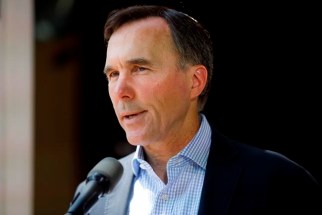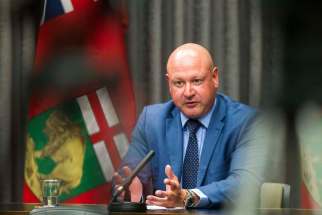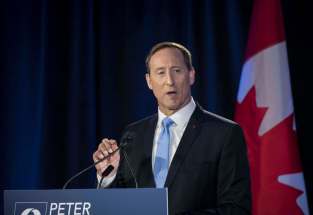Conservative leadership vote unlikely to excite
Read this article for free:
or
Already have an account? Log in here »
To continue reading, please subscribe:
Monthly Digital Subscription
$0 for the first 4 weeks*
- Enjoy unlimited reading on winnipegfreepress.com
- Read the E-Edition, our digital replica newspaper
- Access News Break, our award-winning app
- Play interactive puzzles
*No charge for 4 weeks then price increases to the regular rate of $19.00 plus GST every four weeks. Offer available to new and qualified returning subscribers only. Cancel any time.
Monthly Digital Subscription
$4.75/week*
- Enjoy unlimited reading on winnipegfreepress.com
- Read the E-Edition, our digital replica newspaper
- Access News Break, our award-winning app
- Play interactive puzzles
*Billed as $19 plus GST every four weeks. Cancel any time.
To continue reading, please subscribe:
Add Free Press access to your Brandon Sun subscription for only an additional
$1 for the first 4 weeks*
*Your next subscription payment will increase by $1.00 and you will be charged $16.99 plus GST for four weeks. After four weeks, your payment will increase to $23.99 plus GST every four weeks.
Read unlimited articles for free today:
or
Already have an account? Log in here »
Hey there, time traveller!
This article was published 17/08/2020 (1939 days ago), so information in it may no longer be current.
Canadian Conservatives are paying close attention this week as their national leadership race reaches the finish line. Party officials will start counting ballots at 5 p.m. Friday to find whether their new leader is former justice minister Peter MacKay or former veterans affairs minister Erin O’Toole or one of the less prominent candidates.
Party membership figures show an intensity of interest in Conservative ranks. The party reported last month that it had nearly 270,000 members as a result of recruitment by leadership candidates, more than the party has ever had before at the time of a leadership race.
It is less clear, however, that other Canadians will be paying much attention. The main work to be done is counting ballots, which is not in itself a hugely entertaining spectacle. The counting may take a very long time. The party has designed an elaborate system intended to be fair to all electoral district associations and all party members. The system also runs the risk of producing a fuzzy or ambiguous verdict.
The Conservatives of each electoral district have 100 points to award to leadership candidates. If 5,000 party members from a district cast ballots, those 100 points will be awarded to candidates in the same proportions as the ballots. If just one party member from a district votes, that member’s choice will direct all 100 points. Voters can signify second, third and fourth choices and their ballots will be redistributed accordingly if there is no winner on the first and subsequent ballots.
It’s all very elegant and mathematical. If the result is less than a landslide for one candidate, however, the losers may suspect they are victims of excessive engineering.
The Conservatives will start counting ballots while the U.S. Democratic National Convention will still be reverberating through the body politic. The Milwaukee-centred event will be an exercise totally unlike the U.S. party conventions of former years, but it may still be a hard act to follow.
There will be no mass gathering of state delegations on a convention floor. There will be a huge control room and a small stage in Milwaukee co-ordinating electronic feeds from locations all across the country. In two hours of speech-making each evening for four evenings, Democrats in their scattered locations will knock themselves out stoking rage against the Republican administration of President Donald Trump and firing up the enthusiasm of the party faithful.
The Democrats will confirm their nomination of former vice-president Joe Biden and running mate Sen. Kamala Harris to defeat Mr. Trump at an election 11 weeks hence. Pollsters give Mr. Biden a good chance of winning. The virtual convention is inherently interesting because it starts a battle that will be fought and finished over the next 11 weeks and that might end the Donald Trump presidency after just one term.
Canada’s Conservatives, by contrast, are choosing a leader to take on a Liberal government that was re-elected (but without a parliamentary majority) just 10 months ago. The government has so far found parliamentary support for its program and, despite the Liberal leadership’s continuing scandals and blunders, still stands ahead of the Conservatives in the polls. The new leader faces an uphill climb to power.
The Conservatives are choosing a leader of the Opposition for Canada — a vital player in our parliamentary structure, but hardly an individual who always sets pulses racing. Canadians should, of course, be paying attention, but many may opt to watch hockey instead.









